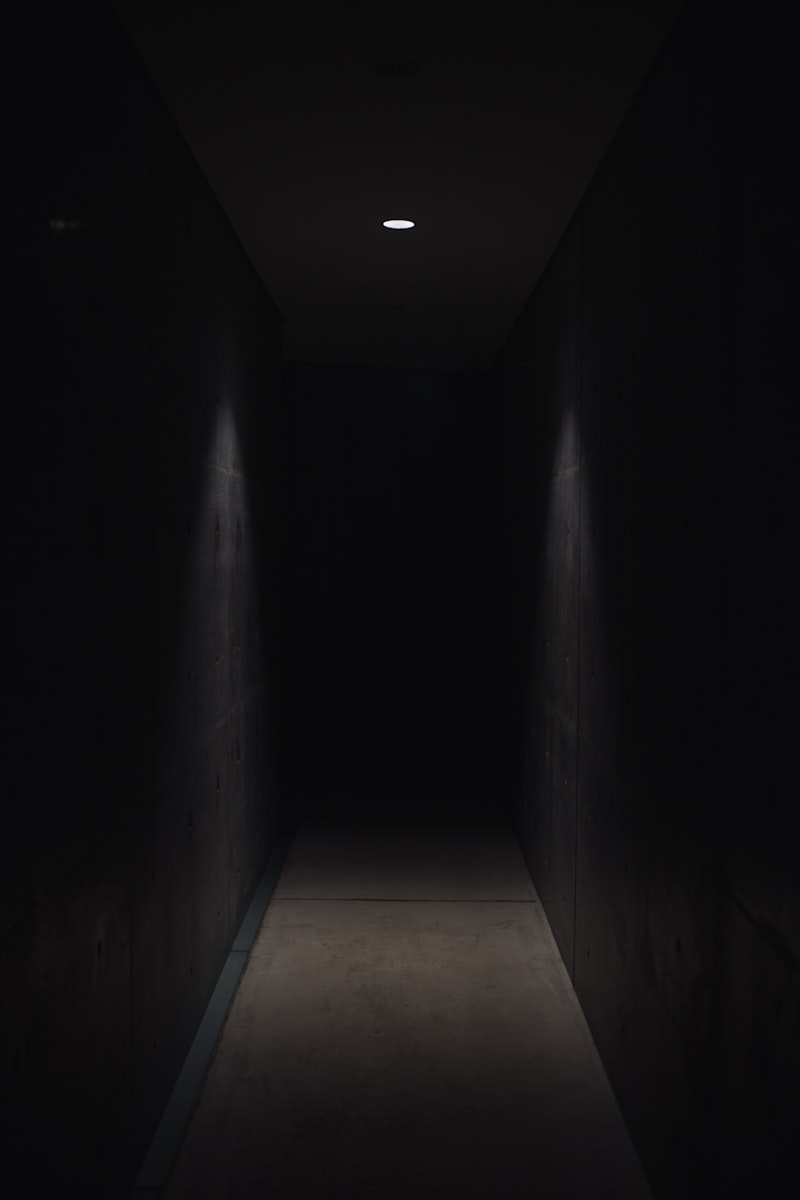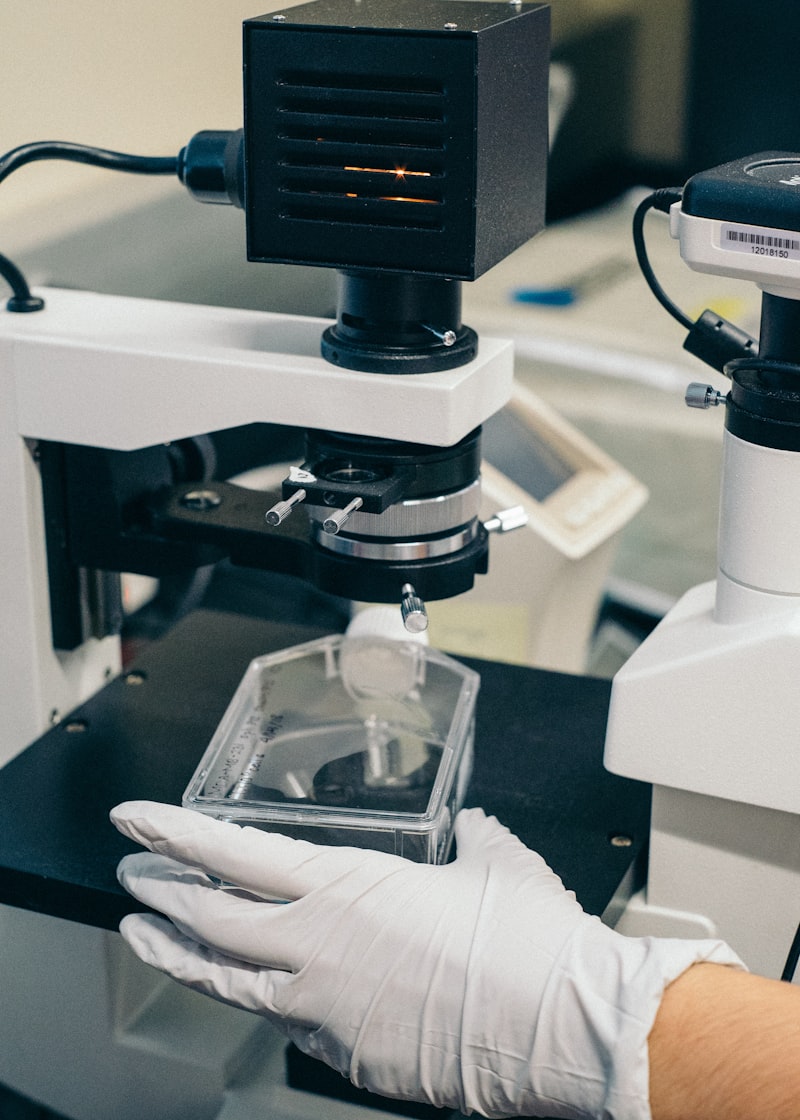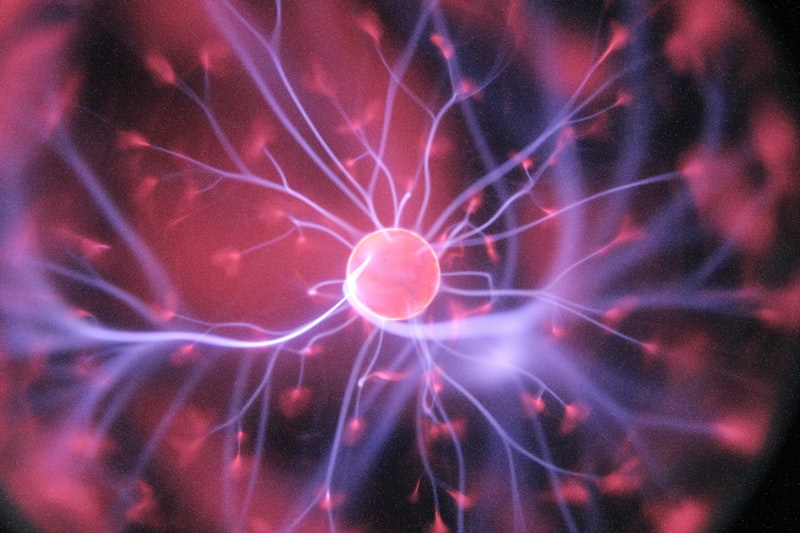

When we settle into a darkened theater or cozy up on the couch with popcorn, our bodies prepare for an intense experience. As the suspense builds and the music crescendos, our heart rates start to climb. It’s not just our imagination; studies show that watching horror movies can actually trigger a physiological response known as the “fight or flight” reaction. Adrenaline surges through our veins, causing our hearts to race and our breathing to quicken. This heightened state of alertness is our body’s natural way of preparing to face a perceived threat.
But it’s not just our hearts that feel the impact. Our brains are also deeply engaged during scary scenes. The amygdala, a small structure in the brain responsible for processing emotions, lights up like a firecracker in response to fear-inducing stimuli. This triggers a cascade of neurotransmitters and hormones, including dopamine and endorphins, which can leave us feeling both terrified and oddly exhilarated.
Interestingly, the physical effects of watching horror movies can linger long after the credits roll. Some viewers report difficulty sleeping or a heightened sense of paranoia, especially if the film played on their deepest fears. This phenomenon is often referred to as the “horror movie hangover,” where our minds continue to replay frightening images, keeping us on edge.
Yet, despite these unsettling effects, many people seek out horror movies for the thrill of being scared. It’s a paradoxical experience where we voluntarily subject ourselves to fear, knowing full well the potential consequences on our psyche. Psychologists suggest that this exposure to controlled fear may even have therapeutic benefits, helping some individuals confront and manage their real-life anxieties in a safe environment.
Heart-Pounding Cinema: The Physiology Behind Horror Movie Reactions
Imagine sitting in a dimly lit theater, popcorn in hand, as eerie music starts to play and tension builds on screen. Your heart races, palms sweat, and you find yourself on the edge of your seat. This is the magic of horror movies – they evoke powerful physiological responses that leave us both thrilled and terrified.
When we watch a horror film, our body undergoes a series of fascinating reactions. The jump scares, sudden twists, and chilling atmospheres trigger our fight-or-flight response, a primal reaction designed to protect us from perceived danger. Adrenaline floods our bloodstream, heightening our senses and sharpening our focus. This surge in adrenaline is what makes our hearts pound and our breathing quicken, preparing us to either confront the threat or flee from it.
Moreover, our brains play a crucial role in our experience of fear during horror movies. The amygdala, known as the brain’s fear center, processes emotions and triggers fear responses based on sensory cues from the movie. It assesses the situation rapidly, often before our conscious mind fully comprehends what we are seeing on screen. This rapid processing contributes to the intensity of our emotional reactions, making us scream, gasp, or even cover our eyes in fear.
Psychologically, horror movies also tap into our deep-seated fears and anxieties. They explore themes of mortality, the unknown, and the supernatural – elements that resonate with universal human fears. By confronting these fears in a controlled environment, such as a movie theater, we experience a cathartic release of tension and anxiety. This paradoxical enjoyment of fear is akin to riding a roller coaster; although frightening, it provides an exhilarating thrill that many find addictively enjoyable.
Adrenaline Rush: Exploring the Body’s Response to Scary Films
When you settle in for a horror flick, your brain switches into high gear. It’s like a roller coaster ride for your emotions, sending signals to your body that danger is near. Your heart starts pounding like it’s trying to escape your chest. This is your body’s way of preparing to fight or flee, even though you’re safely on your couch.
Adrenaline, also known as epinephrine, is the star of the show here. It’s a powerful hormone and neurotransmitter that triggers your body’s fight-or-flight response. As soon as your brain perceives a threat – whether it’s a masked killer on screen or a sudden loud noise – adrenaline gets released into your bloodstream.
Imagine adrenaline as your body’s own action hero. It increases your heart rate, which pumps more oxygen-rich blood to your muscles, making you feel more alert and ready to react. Your senses sharpen, and time seems to slow down as you become hyper-aware of your surroundings.
But it’s not just your heart and muscles that get in on the action. Adrenaline also affects your respiratory system, making you breathe faster to take in more oxygen. This helps fuel your muscles and brain, giving you a surge of energy. No wonder you might find yourself gripping the edge of your seat during a particularly intense scene!

Interestingly, the thrill of scary movies can also trigger the release of endorphins – your body’s natural painkillers – which can leave you with a sense of euphoria after the initial fright has passed. It’s like riding a wave of emotions, from fear to relief and even excitement.
Next time you feel the adrenaline rush while watching a horror movie, remember it’s your body’s way of preparing you for action, even if the only thing you’re fighting is the urge to hide under a blanket. So, grab some popcorn, turn down the lights, and enjoy the thrill ride – your body is designed to handle it all!
From Goosebumps to Gasps: Understanding Physical Fear Responses in Movies
Picture this: you’re watching a horror movie, fully immersed in the suspenseful plot. Suddenly, a shadowy figure emerges from the darkness with a bone-chilling shriek. Your heart races, adrenaline surges, and your muscles tense involuntarily. This immediate, instinctive reaction is known as the fight-or-flight response, where your body prepares to confront the threat or flee from danger.
But why do horror movies have such a powerful grip on our senses? It all boils down to psychology. Filmmakers expertly manipulate audiovisual cues—sinister music, dim lighting, sudden movements—to create an atmosphere of dread. These elements heighten our senses, making us more susceptible to startling stimuli. As a result, our bodies react as if the danger were real, even though our rational minds know it’s just fiction.
Moreover, our brains play a pivotal role in processing fear. When we see a terrifying scene unfold on screen, the amygdala, our brain’s fear center, kicks into overdrive. It processes sensory information rapidly, triggering a cascade of physiological responses. Increased heart rate, dilated pupils, and heightened reflexes are all part of the body’s evolutionary defense mechanism against potential threats—whether real or perceived.
Interestingly, our physical reactions to fear in movies can vary widely from person to person. Some may cover their eyes during intense scenes, while others may scream or jump in their seats. These individual responses stem from personal experiences, cultural influences, and even genetic predispositions that shape our tolerance for suspense and horror.
Ultimately, the allure of horror films lies in their ability to provoke intense emotional and physical responses. They challenge our senses, test our limits, and leave us with a lingering sense of unease long after the credits roll. By understanding how filmmakers manipulate fear, we gain insight into the powerful impact of storytelling on our emotions and physiology alike.
Brain Chills: Neurological Effects of Horror Movie Scenes
Have you ever felt those tingles down your spine while watching a horror movie? It’s more than just a reaction; it’s your brain at work. Horror movies are crafted to evoke fear and suspense, triggering a range of neurological responses that can leave a lasting impact on viewers.
When you watch a scary scene, your brain kicks into high gear. It releases a surge of adrenaline, preparing your body for fight or flight. This rush of adrenaline can heighten your senses, making you more alert and responsive to the stimuli around you.
But it’s not just adrenaline that’s at play. Horror movies often use suspenseful music, dark lighting, and sudden movements to create a sense of unease. These sensory cues can activate the amygdala, the part of your brain responsible for processing emotions like fear and anxiety.
As you watch, your brain also releases dopamine, a neurotransmitter associated with pleasure and reward. This dopamine release can create a paradoxical feeling of enjoyment, despite the fear-inducing content on screen. It’s like riding a rollercoaster; your brain craves the thrill, even while experiencing fear.
Moreover, watching horror movies can also affect your sleep patterns. The heightened emotional arousal and increased adrenaline levels can make it difficult to unwind after a scary movie. This can lead to disrupted sleep or even nightmares as your brain continues to process the intense stimuli it experienced during the film.
While horror movies are designed to entertain and scare us, they also have a profound effect on our brains. From triggering adrenaline rushes to affecting our emotions and sleep patterns, the neurological impact of horror movie scenes is undeniable. So, the next time you feel those ‘brain chills’ during a scary movie, remember, it’s your brain reacting to the thrilling experience crafted by filmmakers to captivate and terrify.
This article aims to inform readers about the neurological effects of watching horror movies, emphasizing the engagement and impact of the content while maintaining an SEO-friendly approach.
The Pulse of Fear: How Horror Films Influence Heart Rate Variability
When we watch a horror film, our bodies go through a rollercoaster of emotions. The suspenseful buildup, sudden shocks, and chilling scenes trigger a cascade of physiological responses. Our heart rates increase, adrenaline surges, and this heightened state of arousal can be seen in changes in HRV. Studies have shown that during intense moments in horror movies, HRV decreases, indicating a more synchronized heart rhythm, which is often associated with a stress response.
Interestingly, the effect doesn’t end when the credits roll. For some viewers, the residual fear lingers, affecting HRV even after the movie has ended. This prolonged impact suggests that the emotional intensity experienced during horror films can leave a lasting imprint on our autonomic nervous system.
From a psychological perspective, the appeal of horror movies lies in their ability to evoke a controlled sense of fear. It’s like riding a rollercoaster where we experience the thrill of fear in a safe environment. This controlled fear can be exhilarating, leading to a release of endorphins and dopamine, similar to the feeling of accomplishment after overcoming a challenge.
Horror films are more than just entertainment—they are a physiological experience. They manipulate our heart rates and provoke responses that demonstrate the powerful connection between our minds and bodies. As we continue to explore the influence of media on human physiology, understanding these effects can provide deeper insights into the complexities of our emotional and physical responses.
Sweat and Shivers: The Physical Manifestations of Fear on Screen
When a character is afraid, their body often betrays them before they can utter a word. Beads of sweat glisten on their forehead, their hands tremble uncontrollably, and their breath quickens, audible in the silence of the scene. These physical manifestations serve as visual cues that something is amiss, heightening the audience’s anticipation.
Consider the classic horror movie scene: a lone character hears a creak in the old, dark house. As tension builds, their eyes widen, and the camera zooms in to capture the glistening sweat on their brow. This subtle detail not only illustrates their fear but also connects the viewer intimately with the character’s emotional state.

Moreover, shivers running down the spine aren’t just a metaphorical expression in film—they’re meticulously crafted sensory experiences. The sound of a distant howl, the sudden drop in temperature, or a fleeting shadow in the background—all contribute to the audience’s unease. These cinematic techniques, often overlooked, play a crucial role in suspending disbelief and transporting viewers into the heart of the narrative.
In essence, ‘Sweat and Shivers’ in cinema aren’t just about portraying fear; they’re about creating a sensory journey for the audience. Through meticulous attention to detail and the artful use of cinematography, filmmakers transform abstract emotions into tangible, palpable experiences. Next time you watch a suspenseful scene, pay attention to the subtleties—the sweat on the brow, the involuntary shiver—and experience fear through the eyes of the characters themselves.
Behind the Scream: Cortisol and Stress Levels During Horror Movie Watching
When you settle in for a horror flick, your body prepares for battle. Cortisol, known as the stress hormone, spikes in response to perceived threats – even if they’re on screen. This surge in cortisol triggers your fight-or-flight response, gearing you up to confront danger or flee from it. It’s like your body hits the panic button, but in a controlled, movie theater setting.
Imagine watching a scene where a dark figure creeps silently closer. Your eyes widen, muscles tense, and suddenly, your cortisol levels shoot up. This natural reaction is your body’s way of staying alert and ready to react. It’s evolution’s gift to us – a survival mechanism that kicks into high gear during horror movies.
Interestingly, not everyone reacts the same way. Some thrill-seekers actually enjoy the rush of heightened cortisol, seeking out horror movies for the adrenaline boost. For others, though, the spike in stress levels can be overwhelming, leading to sweaty palms, increased heart rate, and the urge to cover their eyes.
Researchers have delved into this phenomenon, studying how cortisol levels fluctuate during scary movie scenes. They’ve found that the suspenseful build-up before a jump scare can be just as stress-inducing as the scare itself. It’s a rollercoaster ride of emotions orchestrated by filmmakers to keep audiences on the edge of their seats.
So, next time you’re curled up with popcorn watching a horror flick, pay attention to how your body reacts. That rush of cortisol coursing through your veins isn’t just movie magic – it’s your body’s way of experiencing the thrill of fear in a safe, controlled environment.
Frequently Asked Questions
Why do some people enjoy the physical thrill of horror movies?
Discover why certain individuals find enjoyment in the adrenaline rush of horror movies. Explore the psychological reasons behind their fascination with fear and how it contributes to their entertainment experience.
What physical changes occur in the body while watching horror films?
Discover how watching horror films triggers physical changes in your body, from increased heart rate and adrenaline levels to heightened senses and temporary spikes in stress hormones.
How do horror movies trigger our fight-or-flight response?
Learn how horror movies trigger our fight-or-flight response by exploring the psychological mechanisms behind fear, adrenaline release, and physiological reactions stimulated by suspense, jump scares, and eerie atmospheres.
Can watching scary movies impact heart rate and blood pressure?
Discover how watching scary movies can affect heart rate and blood pressure. This FAQ explores the potential physiological responses triggered by fear-inducing films and provides insights into their short-term impacts on cardiovascular health.
Are there long-term effects on health from frequent exposure to horror films?
Discover the potential long-term health impacts of frequent exposure to horror films in this concise FAQ. Gain insight into how prolonged viewing habits may affect mental and emotional well-being over time.



